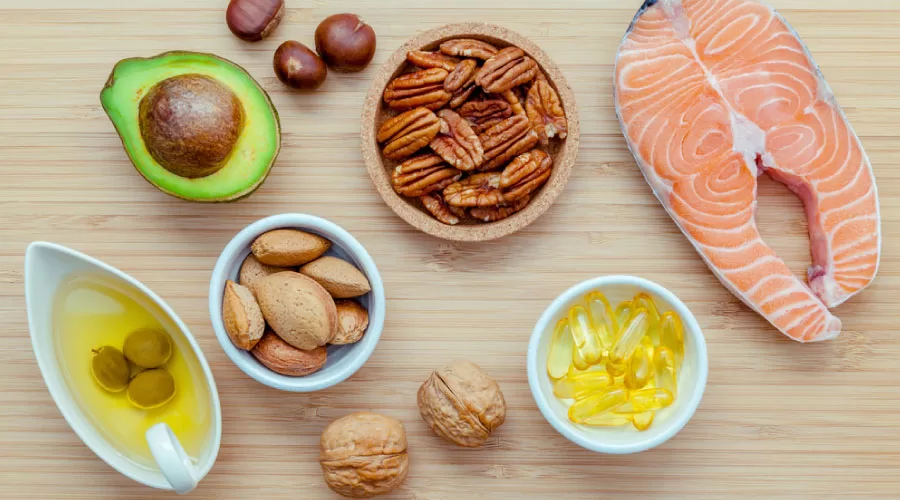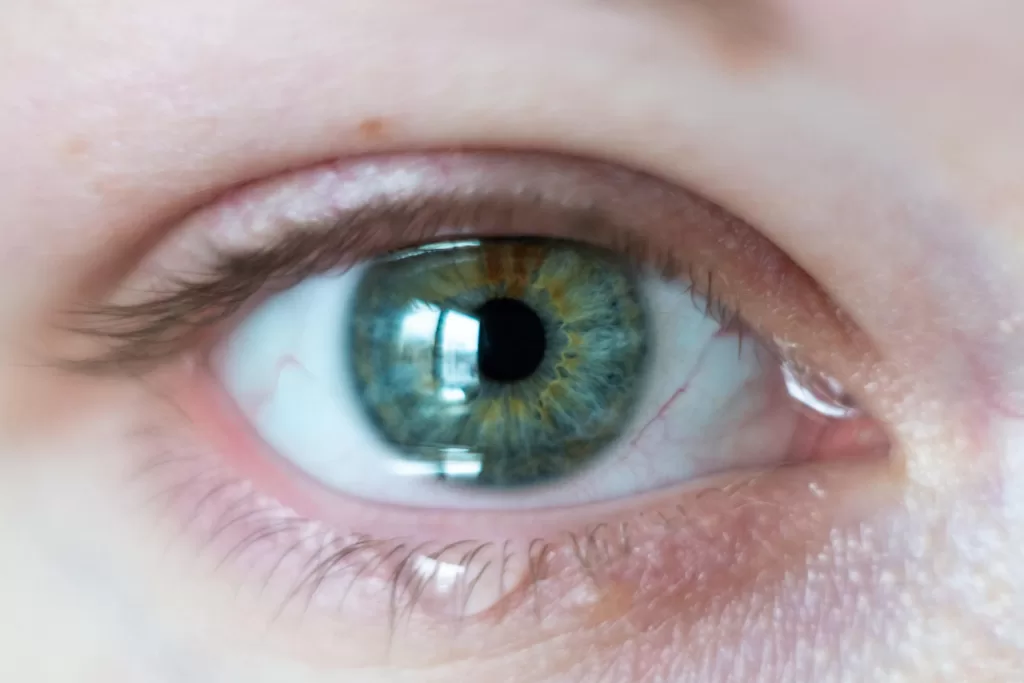The symptoms of “dry eye syndrome,” which is another name for dry eyes, can be annoying and sometimes make it hard to do things. The inability to focus on the task at hand or enjoy the company of loved ones is only one of the many negative effects of this eye disorder. Redness, irritation, and pain in one or both eyes are all symptoms of dry eye syndrome. The first step in treating dry eyes is to make some basic modifications to your lifestyle or look into some home treatments.
Signs of dry eyes
However, you should consult an eye doctor promptly if your condition persists or worsens, the intensity of your discomfort increases, or the color of your eyes changes. Before looking into treatments and ways to make your eyes feel better at home, it’s helpful to know what causes dry eyes most often.
Is there a way to prevent dry eyes?
Lack of tear production is the primary contributor to dry eye syndrome. There are several potential causes of dry eye syndrome, including but not limited to medical disorders, environmental factors, and certain drugs.
- Antihistamines
- OTC decongestant nasal sprays
- Blood pressure medication
- The use of hormone replacement treatment and oral contraceptives
- Medications for acne
- Anti-depressants/anti-psychotic
- The treatment of Parkinson’s disease using pharmaceuticals

Causes of Dry Eye
- Above the age of 65
- Wearing contacts constantly
- Smoking
- Reduced blinking due to staring at screens for too long
- Deficiencies in Vitamins
Lupus, Sjogren’s syndrome, scleroderma, and rheumatoid arthritis are all examples of autoimmune diseases. Environmental extremes are linked to chronic disorders like diabetes.
With the help of a thorough eye exam, dry eye syndrome and other eye problems can be found and their causes can be found out. Do you need temporary relief from dry eyes? If you suffer from dry eyes, try one of these easy home remedies:
1. You should thoroughly clean your eyelids and lashes.
method for cleaning the eyelids
The primary treatment for dry eyes is a thorough cleaning. Eyelids and lashes are home to numerous tear glands; therefore, it’s important to give them special attention when washing your face.
It’s best to wash your upper and lower eyelids gently with warm water and baby shampoo or an eyelid cleaner that doesn’t include any preservatives. Eye makeup and face cream residue might irritate your eyes if it gets into the tear film and stays there.
Tear film, the transparent fluid that serves to shield the eye, is composed of oil secreted by the meibomian glands, water secreted by the lacrimal glands, and mucus secreted by specialized goblet cells in the skin. Inadequate tear production can lead to dryness and irritation in the eyes.
After you’re done washing your face, put on an eye compress or use a warm, damp towel to make your eyes feel better.
2. Give some rest to your eyes.
There’s a possibility that your eyes are constantly dry because of your constant connectivity. The brightness from electronic devices, such as a computer, smartphone, or television, might hurt your eyes, as it can decrease blink rates or cause partial blinking.
The National Institutes of Health says that many studies have found that people who use computers blink less often, which can lead to dry eye syndrome.
Another study found that the eye can’t naturally lubricate and feed itself if the upper lid doesn’t cover the cornea completely. Ineffective blinking may cause this lipid layer to vaporize entirely.
Taking breaks to rest your eyes can keep you from getting eye strain from staring at a computer screen for too long. Taking breaks to rest your eyes can keep you from getting eye strain from staring at a computer screen for too long.
Make sure your eyes get 20 seconds of rest for every 20 minutes spent in front of a screen. Every 20 minutes, look away from your screen and focus on anything at least 20 feet away. Put your feet up, close your eyes for 20 seconds, and increase your blink rate to refresh your eye moisture.
3. Blink your eyes more often.
Investigative Ophthalmology & Visual Science says that strong, purposeful blinking is good for eye health and helps open glands. These blinks, however, may appear and feel artificial.
If you need to get the hang of blinking but aren’t in a private setting, you can practice full, natural-looking blinks in front of a mirror.
Try shutting your eyes for a moment. Wait two seconds with them closed, and then release the clasp. After that, close your eyes, give it a moment, and then squeeze your eyelids shut for the full four seconds. Don’t close your eyes; open them again.
Every 20 minutes, 20 times a day, do this to help keep your eyes moist. This is a variant on the “20-20 blink rule,” which recommends closing one’s eyes for 20 seconds every 20 minutes.
4. Eat more foods rich in essential fatty acids.
The high-fat health advantages of a raw salmon steak made with fresh ingredients
The meibomian gland, responsible for producing the waxy component of tears, functions better when fed omega-3 fatty acids, says the American Academy of Ophthalmology.
Because of this, omega-3s can help relieve dry eye symptoms naturally by reducing inflammation and making the body make more good fats. There are a variety of sources for omega-3 fatty acids, including:
- Meaty fish like salmon and tuna
- Vitamins with fish oil
- Plants containing flaxseed
5. Be sure you’re getting enough vitamins A, B12, and D.
The onset of dry eye syndrome has been connected to low vitamin D levels. In addition to vitamin C, another water-soluble nutrient, vitamin B12, and vitamin A are also essential for healthy eyes.
Additionally, your eyes require the following vitamins:
- A and C vitamins Vitamin E
- Riboflavin with vitamin B6
- Supplementing with Thiamine, Lutein, and Zeaxanthin
Dry eye treatment and other eye problems can benefit from a healthier, more well-rounded diet. Think about the high nutritional content of these foods with a narrower focus:
- Vegetables that are in the cabbage family
- Dairy Products
- Fish
- Fruits with a citric acid content
- Nuts
- Mushrooms
- Orange foods
- Vegetables with leaves
- Kiwis
- Grapes
Furthermore, there are many meals that are high in antioxidants.

Talk to your doctor about taking nutritional supplements if you don’t think you’re getting enough of the things you need. Over-supOversupplementationible when taking too many supplements at once. If you are already feeling sick, you shouldn’t make things worse by taking more supplements than you need to.
6. Take it easy on the booze.
When you drink too much alcohol, you lose water and electrolytes, which can cause problems with your eyes. Research paid for by the National Institutes of Health shows that drinking alcohol is linked to dry eye syndrome.
If you’re experiencing dry eyes, cutting back on alcohol or quitting altogether may help. Water loss is a common side effect of alcohol consumption. As a result, drinking alcohol can cause your body to lose more moisture than usual. The effects on your eyes are substantial as well. Consuming alcohol frequently can cause serious dryness and irritation of the eyes.
7. Don’t smoke
There are around 7,000 compounds found in cigarette smoke. These chemicals aren’t just dangerous to your health; they can also cause eye irritation. In fact, the likelihood of developing dry eyes is doubled for smokers.
Smoking increases the risk of dry eye because it alters the composition of tears. Smoking is obviously bad for your eyes.
You should really contemplate giving up smoking if you are a smoker. A nonsmoker should stay away from places where smoking is common. Since smoke has the ability to travel up to 20 feet, this applies both indoors and outside.
The health risks associated with smoking are there even if you’re in an outdoor situation because the wind can carry the smoke particles further away. Still, inflammation of the eyes and lungs is possible.
8. Drink more water to hydrate yourself
Water is obviously beneficial to the eyes. Water keeps the lacrimal glands lubricated and helps them stay in place. This makes it possible for the eye to make tears, focus, and do all the other things it does. It’s impossible to see well, blink easily, and clear debris from your eyes if you aren’t properly hydrated.
Try to get in eight to ten glasses of water daily for optimal eye health and general wellness. If you think that’s too much, try setting a target of four glasses and working your way up.
9. Take more sleep to rest your eyes
According to research by the National Institutes of Health, sleep deprivation makes it so you don’t shed any tears. Those who already suffer from dry eyes will find this exacerbating.
Seven to eight hours of sleep every night are recommended for people. People who are having trouble sleeping should do the following;
Alter your daily schedule. Try doing your workout first thing in the morning instead of waiting until later. Make sure it’s calm and dark where you plan on sleeping. Blackout curtains can be used to reduce the amount of light coming in from outside sources, such as street lamps or city lights.
Establish a regular bedtime regimen and adhere to it. Put your phone, tablet, and other blue-light-emitting devices away an hour before going to bed to give yourself time to unwind.
10. Find the proper eye-care products.
Drops for the eyes are another at-home treatment you can try for dry eyes, but not all drops are created equal. When looking for eye drops to calm red, irritated eyes, Doctors suggest opting for those without preservatives.
The use of preservative-containing eye drops more than four times daily has been linked to inflammation of the eye. Drops used to treat red eyes may actually aggravate dry eye symptoms, so be careful.
You might also consider using synthetic tears. These are artificial tears, available without a prescription at any drug store.
11. Make use of eye ointments
someone putting eye gel on the inside of their eyelids
Gels and ointments that lubricate the eye area provide longer-lasting relief than eye drops. These treatments for dry eyes, however, are thicker than drops and should only be used before bedtime because they may impair eyesight.
12. Alter your surroundings.
Occasionally, dryness and irritation can be brought on temporarily by things like low humidity, high winds, dust, air conditioning, heat, and smoke. Get as far away from that as you possibly can. Be aware of the relative humidity of the interior air if you’re doing this.
Irritation of the eyes can be alleviated in a few different ways. Put on a humidifier. If you have dogs or children, a cool-mist humidifier is preferable year-round, while a warm-mist humidifier is preferable during the colder months. The warm-mist models are also less likely to promote the growth of bacteria.
To add moisture to the air, set a pan of water next to your radiator or portable heater. Air conditioning can irritate your eyes if you leave them in the dry, blowing air for too long.
For maximum protection against airborne pollutants and allergies, invest in high-quality HVAC filters. Portable air purifiers with HEPA filters are another choice for people who want to be less exposed to allergens in the air.
Close your curtains and blinds on “poor-air days,” when there is a lot of pollution and smog in the air and when the wind is blowing hard. If wind gusts exceed 13 miles per hour, you should also shut the windows.
13. Wear circumaural eyewear
Using sunglasses with a full frame, you can wrap yourself in comfort and style. Photophobia is one symptom of dry eye disease. This extreme sensitivity to light can cause people to squint, have itchy eyes, see spots, get headaches, and cry uncontrollably. Several types of glasses can ease the pain of dry eyes and keep other problems from happening:
- Onion glasses are effective at preventing irritant gases from causing discomfort to your eyes.
- FL-41 filtered lenses, and blue-blocking lenses.
14. Have your eyes massaged frequently
A relaxing eye massage has numerous positive effects. Reducing stress, increasing blood flow, and relaxing muscles are just some of the benefits of a good pampering session. Even though you aren’t actually touching your eye, touching the skin around your eye can still affect your sense of sight and may cause you to produce more tears.
There should never be any discomfort when massaging the eye area. If you don’t know what you’re doing with massage or acupuncture, it’s advisable to get some expert advice.
Use lukewarm water in a clean or previously sterile basin before beginning the massage. Use a clean piece of cotton or cotton ball. Squeeze the excess water out of the cotton ball after dipping it in the lukewarm water. Then, dab the cotton ball on your right eye and hold it there for one minute. Do it again, this time for a count of 5. To treat your left eye, simply repeat the steps above. After that, move on to massage your eyes.

See a Physician
If the dry eyes are moderate and perhaps brief, you could try home treatment. But you should see an eye doctor if the symptoms keep coming back or getting worse, or if you notice any new ones. Dry eye syndrome may be a symptom of blepharitis (inflammation of the eyelids) or ocular surface inflammation if these other symptoms are present.
Disclaimer: The author’s views are his or her own. The facts and opinions in the article have been taken from various articles and political commentaries available in the online media and Eastside Writers does not take any responsibility or obligation for them.
Note: Contact our Writers at www.eastsidewriters.com for writing Blogs/Articles on any niche. We have experts in various domains from Technology to Finance and from Spirituality to Lifestyle and Entertainment.







Pingback: What Is Age-Related Macular Degeneration, Its Consequences And Treatment - Eastside Writers
Pingback: The Wholesome Multiple Benefits Of Kutik Can Make You Live A Longer Healthy Life - Eastside Writers
Pingback: The Wholesome Multiple Benefits Of Kutki Can Make You Live A Longer Healthy Life - Eastside Writers